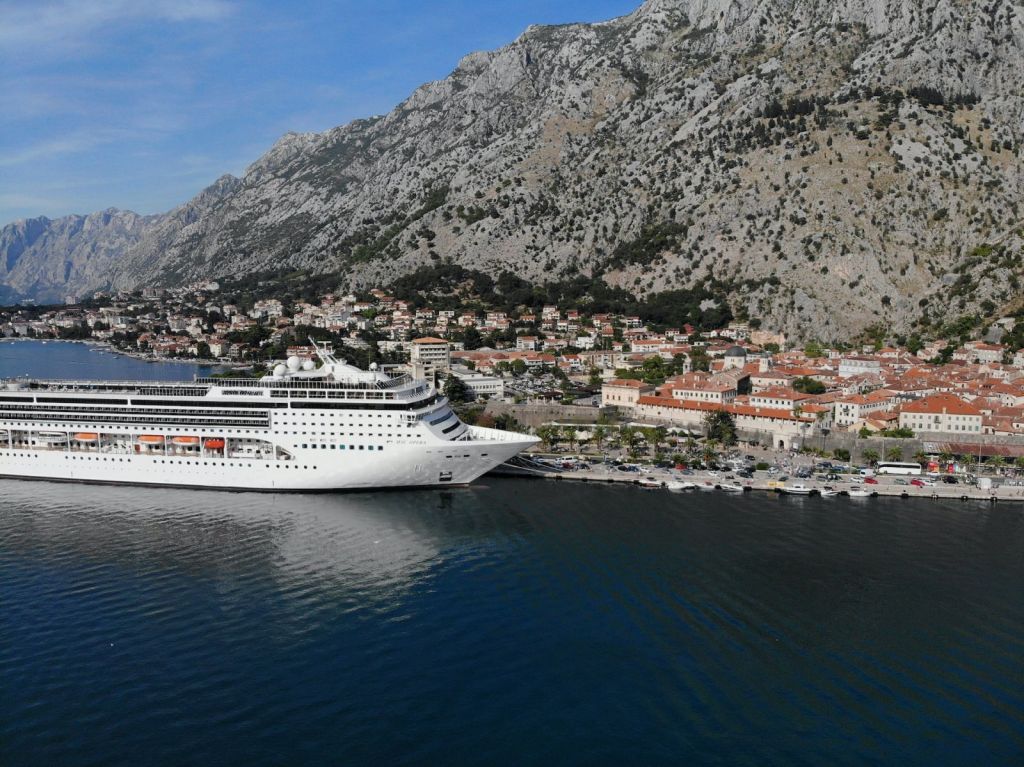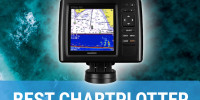How To Figure Out How Shallow Your Boat Can Go
Navigating shallow waters requires a good understanding of your boat's capabilities in order to protect both your vessel and the environment. In this article, we'll help you figure out how shallow your boat can go and provide useful tips for maneuvering in shallow waters. First and foremost, it's important to know your boat's draft. This measurement is crucial for anticipating possible risks and preventing your boat from running aground.
To figure out how shallow your boat can go, always be aware of your boat's draft. As a general guideline, you should have a water depth that is at least 1.5 times your boat's draft to ensure safe navigation. Also note your boat's weight, its hull shape, and water conditions like tide levels, wind, and water currents.
When planning your trip, check nautical charts and local knowledge for depths and conditions in the areas you intend to navigate. You may also use depth finder tools like the one we recommend below.
Summary
- A boat's draft is the distance from the waterline to the lowest point of the boat.
- To determine your boat's draft, refer to its owner's manual, or check with the manufacturer if this information is unavailable.
- The draft may vary depending on the type of boat; for instance, a sailboat with a deep keel might have a deeper draft than a powerboat.
- Flat-bottom boats are generally more suited for shallow water, while deep V-hulled boats require deeper water.

On this page:
Determine Your Boat's Draft and Hull Shape
To figure out how shallow your boat can go, consider its draft, weight, hull shape, and water conditions. Once you have taken these factors into consideration, you can estimate the minimum water depth for your boat.
As a general rule of thumb, you should have at least 1.5 times your boat's draft in water depth to ensure safe navigation. For example, if your boat has a draft of 3 feet, you should navigate in water that is at least 4.5 feet deep.
Draft of a boat
The draft of a boat is the distance from the waterline to the deepest part of the boat. The deeper the draft, the deeper the water the boat needs to float in. You can find the draft of your boat in your boat's manual or specifications.
Your boat's draft refers to the minimum depth of water needed for your boat to float, as it is the vertical distance from the bottom of your boat's hull to the waterline. This measurement is crucial for anticipating possible risks and preventing your boat from running aground and damaging your vessel. It also ensures you can safely navigate through shallow waters and avoid underwater obstructions.
The draft may vary depending on the type of boat; for instance, a sailboat with a deep keel might have a deeper draft than a powerboat.
There are different types of boat draft that you should be aware of. Each type of draft will affect your maneuverability and safety in various conditions, so it's crucial to be familiar with them.
- Minimum draft: The smallest distance between the waterline and the vessel's lowest point when fully loaded
- Maximum draft: The maximum depth your vessel can safely go without risking hitting the water bottom or other obstructions
- Static draft: The draft of a boat when it is not moving
- Running draft: It's the draft when the boat is in motion and may be slightly different due to the boat's speed and water conditions

How to measure your boat's draft
- Refer to manufacturer specifications: Check your vessel's manual or the manufacturer's website for your boat model's draft measurements.
- Use a boat draft calculator: A boat draft calculator can help estimate the draft by considering factors like the weight of the boat, its length, and width. It's useful to double-check your draft or get an idea if you don't have access to the manufacturer's information.
Here are the tools required for measuring boat draft accurately:
- Tape measure
- Weight scale (if necessary)
- Water depth gauge or sounding rod
- Pencil and paper
Here's the step-by-step process for measuring boat draft accurately:
-
Determine the location of the boat's waterline. This is the point at which the boat sits in the water when it is properly loaded and balanced. The waterline can be determined visually or by using a water depth gauge or sounding rod.
-
Measure the distance from the waterline to the lowest point on the boat's hull. This is the boat's draft. Use a tape measure to measure the distance accurately. If the boat is on a trailer or dry dock, the weight of the boat may cause it to settle, so it's important to account for this when measuring the draft. In this case, you can use a weight scale to determine the weight of the boat and calculate the expected draft.
-
Record the draft measurement. Write down the draft measurement, along with the date and any other relevant information, such as the boat's weight or the water conditions.
-
Repeat the measurement periodically. It's important to measure the boat's draft periodically, as it can change over time due to factors such as wear and tear on the hull or changes in the boat's weight. Measuring the draft regularly can help you anticipate potential risks and prevent your boat from running aground or damaging the hull.

Weight of your boat
The weight of your boat also affects how shallow it can go. A heavier boat will sink deeper into the water, requiring deeper water to float in. To determine the weight of your boat, you can check the manufacturer's specifications or consult your boat's manual. It can also be found on the boat's registration or title documents. If you are unable to locate this information, you can also estimate the weight of your boat using a scale or by consulting a professional boat dealer or mechanic.
The weight of your boat can vary depending on the amount of fuel, water, and other equipment on board, so it's important to take these factors into consideration when estimating the weight of your boat.
Hull shape of your boat
The shape of your boat's hull can also affect how shallow it can go. The hull is the bottom part of the boat that sits in the water, and its shape can affect the boat's stability, speed, and maneuverability.
A boat with a flat or shallow V-shaped hull is typically better suited for navigating in shallow waters than a boat with a deep V-shaped hull. This is because a flat or shallow V-shaped hull has less draft and can ride higher in the water, allowing it to navigate in shallower water. On the other hand, a boat with a deep V-shaped hull has a deeper draft and is designed for use in deeper water conditions.
Additionally, boats with a rounder hull shape typically have more drag and resistance in the water, which can make them less efficient and slower than boats with a flatter or sharper hull shape. This can be important when navigating in shallow waters, as a boat with a rounder hull shape may have more difficulty maneuvering in tight spaces or avoiding underwater obstacles.
Water conditions
The depth of the water you can navigate also depends on the conditions of the water. Calm, still water will allow you to navigate shallower waters than choppy, rough water.
For example, if the water is choppy or there are strong currents, a boat may require a deeper draft to maintain stability and avoid running aground. Similarly, if the water is murky or there are submerged obstacles, a boat may require a deeper draft to avoid hitting these hazards.
In addition to the depth of the water, other water conditions can also affect how shallow a boat can go. For example, the presence of waves or swells can make it more difficult to navigate in shallow waters, as the boat may be more likely to hit the bottom or become unstable. Similarly, the clarity of the water can be important, as it can affect the visibility of underwater hazards.

Tide influence
It's important to consider the influence of the tides on your boat's draft. Tides can significantly change the depth of shallow water, affecting how much clearance your boat has. When navigating areas with a tidal range, always be aware of the current tide phase. Make sure you know the times of high and low tides, as well as the depth changes associated with them.
Weather conditions
Weather conditions can also impact the boat's draft, as strong winds and storms can cause changes in water levels and wave heights. For example, heavy rain might increase the water depth in an area, making it temporarily safe to pass. However, when the water levels return to normal, it could be too shallow for your boat.
Similarly, strong winds can cause waves to push your boat's draft even lower, increasing the risk of grounding. To prevent such situations, always monitor weather forecasts and factor in possible effects on the water depths before setting out on a trip.
Importance of Knowing Your Boat's Limit
To prevent boat damage
Be aware of the draft measurements of your vessel to help you avoid running aground, which could cause substantial damage to your boat's hull, propeller, and other underwater components. Understand your boat's minimum water depth requirements, so you can navigate shallow waters confidently without risking scraping the bottom or damaging vital parts of your vessel.
To access shallow waters safely
When you have a clear understanding of your boat's draft, you're able to access shallow waters and tight spaces safely. Study the area you plan to go boating in by checking weather forecasts, tide patterns, and nautical charts, to identify the shallowest spots and compare them to your boat's draft measurements. This information will help you maintain a safe margin for error and confidently explore shallow waterways without putting you or your passengers at risk.

Navigating Shallow Waters
Tips and techniques
First, always slow down before entering shallow water to avoid potential damage to your boat or running aground. You should also trim the engine up to prevent damaging the propeller, engine, or hull, especially in the case of outboard motors.
In addition, be aware of your boat's draft and measure the water depth around it regularly. It's a good idea to load your boat with passengers and equipment when measuring its draft.
Lastly, try to navigate near channels and markers when possible, as these signals guide you through the safest and deepest routes in shallow areas.
Using depth finder tools
A helpful tool to use while navigating shallow waters is a depth finder. These advanced devices can help you monitor water depth in real-time and alert you to potential issues. Here's our recommendation for the best value depth meter on Amazon.
There are various types of depth finders, such as fish finders, that can double as depth trackers. Some models even provide side imaging and down imaging data, which can help you identify structures or obstacles beneath the surface.
Before relying on a depth finder, make sure you calibrate it correctly by following the manufacturer's instructions. Additionally, consider using depth finder tools along with paper or electronic charts to better understand the underwater environment and ensure a safe journey.
Did you find the answer to your specific question?
👍 0 👎 0




Leave a comment